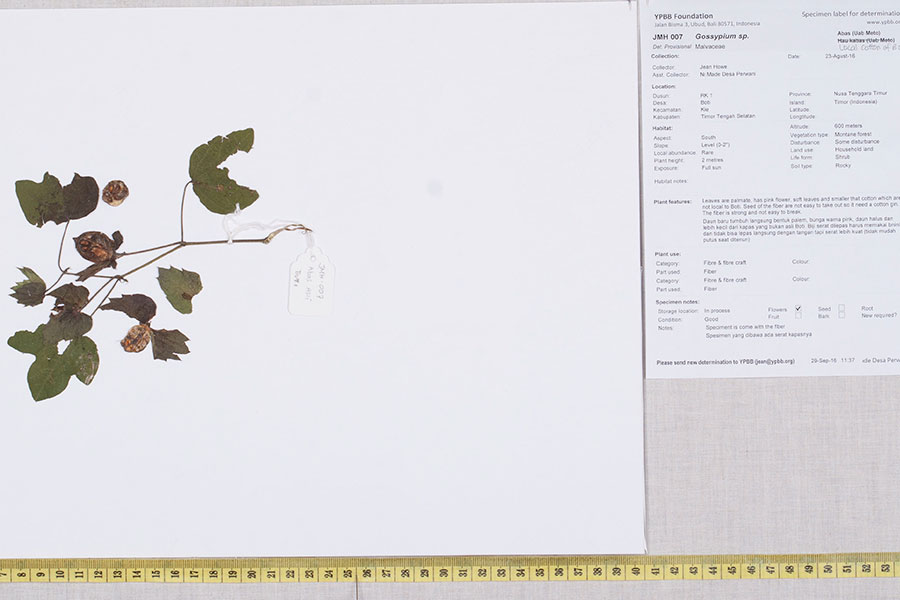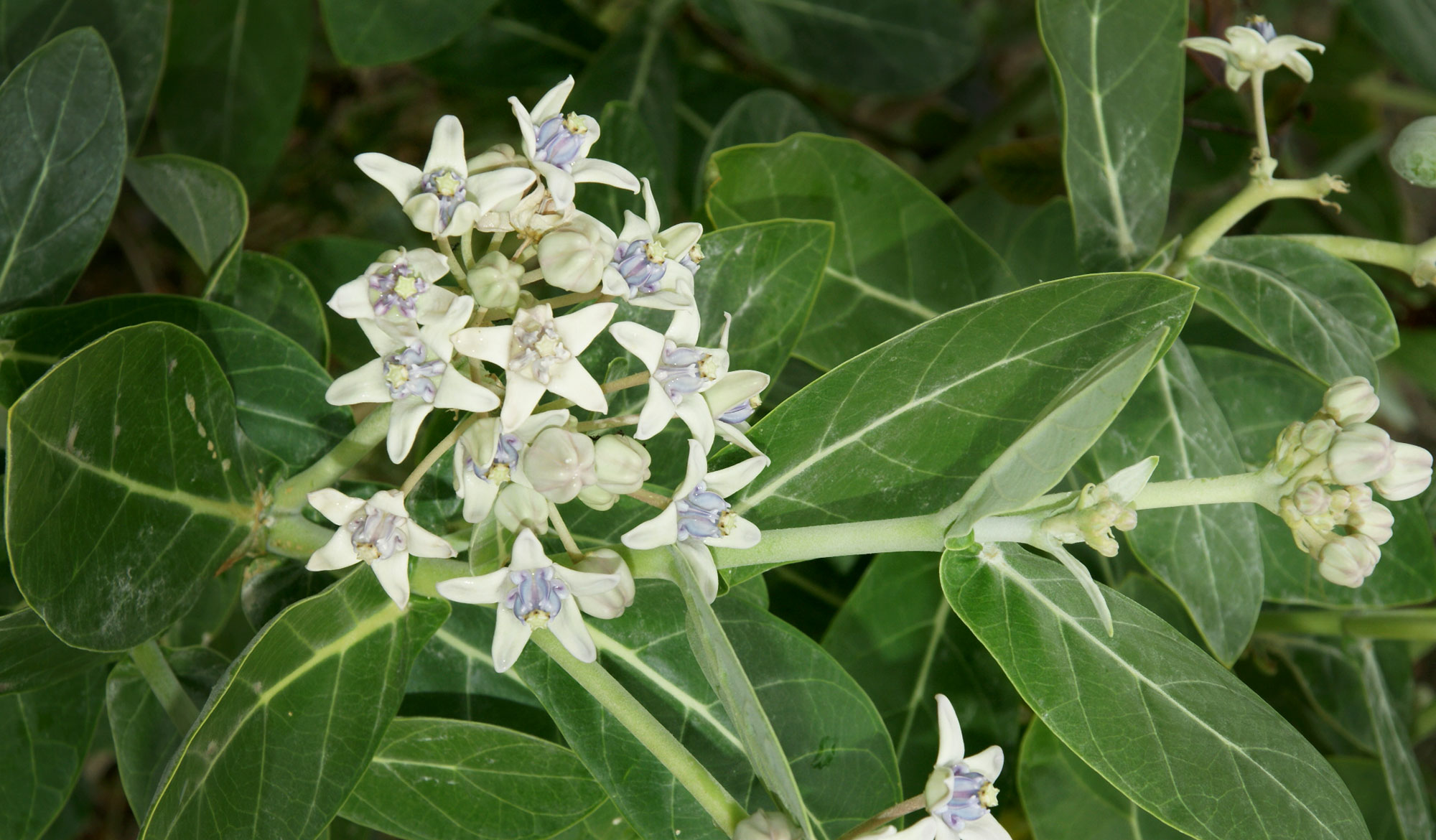JMH 007
Specimen
Gossypium arboreum
No local names given
No english names given
No indonesian names given
Accepted

No gallery images given
Boti, Kie, TTS, Timor
Garden in the backyard of Royal Palace of Boti where Boti women ponded corn, boil hot water and relax.
Kebun di belakang sonaf Boti, tempat perempuan-perempuan Boti menumbuk jagung, memasak air dan duduk-duduk beristirahat
Shrub
Montane forest
Household land
Some disturbance
Rare
2 meters
600 meters
Rocky
Level (0-2¡)
Full sun
Southeast
Not given
Not given
Not given
Not given
Leaves are palmate, has pink flower, soft leaves and smaller that cotton which are not local to Boti. Seed of the fiber are not easy to take out so it need a cotton gin. The fiber is strong and not easy to break.
Daun baru tumbuh langsung bentuk palem, bunga warna pink, daun halus dan lebih kecil dari kapas yang bukan asli Boti. Biji serat dilepas harus memakai bninis dan tidak bisa lepas langsung dengan tangan tapi serat lebih kuat (tidak mudah putus saat ditenun)
Not given
Not given
Speciment is come with the fiber
Spesimen yang dibawa ada serat kapasnya
Plant/specimen uses now includes materials from the CDB. Does this connection make sense?
The uses section lists what this specimen is used for in the cultural group(s) where the specimen was collected.
No uses given
Motif information is coming from CDB. Clicking on the image will take the user to the CDB motif show page in new tab. NOTE: the motif has to already exist in the CDB.
The motifs section lists the motifs, from the cultural group(s) where the specimen was collected, that represent this specimen.
No motifs given
To see all the data about the determination, click the arrow at the end of the row.
Determination Date
Family
Genus
Species
09 Feb 2017
Malvaceae
Gossypium
arboreum L.
var obsifolium (Roxb.) Roberty
RBG - Kew
Rogier de Kok
30 Sep 2016
This determination is sent by Rogier via email on Feb 9, 2017. According to Rogier, this form of cotton was used to be grown all through South East Asia. It was first mentioned by Rhumpius. Now it replaced by more modern forms of cotton in almost all of Indonesia. According to literature, it is used in some areas of South Sumatra, some part of Java, Sulawesi and the Mollucas and in the Lesser Sunda islands.
Determinasi ini disampaikan oleh Rogier via email pada 9 Februari 2017. Menurut Rogier, jenis kapas ini dulu tumbuh di seluruh wilayah Asia Tenggara. Pertama kali diperkenalkan oleh Rhumpius. Sekarang kapas ini digantikan oleh jenis yang lebih modern di seluruh Indonesia. Menurut literatur-literatur jenis ini ada di beberapa wilayah Sumatra, beberapa wilayah Jawa, Sulawesi dan Maluku serta Pulau Lesser Sunda.
In Process
Good
